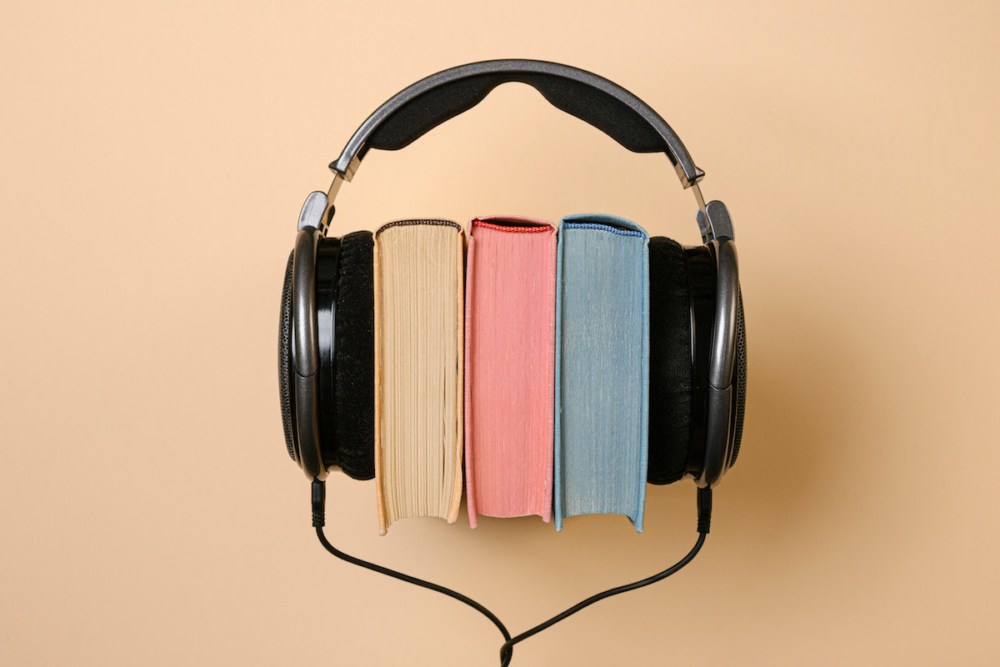
Today’s post is by author Thelma Fayle.
For the last two years, I’ve had unexpected success in experimenting with my “chipmunk research method.” I was inspired to try this technique after hearing an intriguing comment made by my friend Oriano Belusic, past president of the Canadian Federation of the Blind (CFB).
Blind since age seven, he has learned to read at high speeds. (I use the term “read” for audiobooks, as this is the word used by most blind people I know.) Oriano uses a screen reader, which he routinely sets to a speed of 2.5. A speed of 1 is normal audiobook speed for most of us.
When I first stood by his side while he read an email, I could not understand the fast and garbled speech. Yet, Oriano says he is on the slower end of the spectrum when it comes to screen reader speed. He said he knows blind people who, through repetition, practice, and experience can read at chipmunk-fast speeds of 3 or 4.
I was skeptical, but my friend insists anyone can train themselves to discern fast speech. He suggested our brains, with very little coaching, can do unexpected things outside of our usual understanding of “normal.”
I learned he was right.
As a recent MFA graduate (narrative nonfiction), every day I encounter more nonfiction books than I have time to read. So, I decided to try speeding up my research methods by reading the hardcopy version and the audiobook at the same time.
To avoid purchasing two copies of the book, I often borrow the hard copy from the library, and purchase the less expensive audiobook from Audible. Speeded-up listening is not the old speed-reading hype from years ago. That approach involved more scanning than reading and was never successful for me. This is different.
When I started reading a thick book that would normally have taken me two or three weeks to finish, I decided to play around with the audiobook speed. Over a couple of days, I notched it up to 1.2, and then 1.5, 1.8, before eventually pumping it up to 3 a few weeks later. As I read the print book, I keep pace listening to the audio version. The idea may sound improbable, but I felt like I did when I learned to skip French ropes when I was nine. One minute it looked impossible, and the next I was doing it.
The process involves using several senses as I visually read, listen to every word, and underline critical passages (if the hard copy is mine). Keeping up with the fast speed requires studious focus with a simple pause or rewind if I need to stop and reflect. While I was at first doubtful about whether this would work, I have discovered I have uncommon retention of the material using this technique—and believe it or not, after using it for a couple of years I find it relaxing to be intently focused on the content.
I also love knowing that I can pick up any huge nonfiction tome and read it thoroughly in less than a week. This approach is probably better for reading nonfiction than fiction—unless you are reading fiction for research or are under a time crunch.
Below are a few examples of recent successes on my path. I read these titles in one-half to one-third of the completion time listed on the audiobook:
- The Complete Essays of Montaigne (Stanford’s Frame translation, 1957) — 883 pages, listed on Audible at 50 hours, took me less than 20 hours to read.
- Random Family: Love, Drugs, Trouble, and Coming of Age in the Bronx by Adrian Nicole LeBlanc — 436 pages, listed at 20 hours, took me 9 hours.
- A Swim in the Pond in the Rain by George Saunders — listed at 15 hours, took me 5 hours.
- Entangled Life: How Fungi Make Our Worlds, Change Our Minds & Shape Our Futures by Merlin Sheldrake — listed at 10 hours, took me 4 hours.
- The Golden Spruce by John Vaillant — listed at 9 hours, took me 6 hours. (I slowed down on this one to revel in the hauntingly beautiful nonfiction story. I did not want it to end.)
Over time, I have adjusted my research process to read at different speeds. How I feel on the day and the complexity of the text may determine the speed I choose. I am a little slower if the subject is less familiar to me, i.e. science.
My chipmunk research method is a towering time-saver, allowing me to—believe it or not—enjoy researching and doing more of it. I hope this offers you a useful idea to explore.
However, there is a drawback: Reading at a normal audio speed of 1 now feels unbearably slow!

Thelma Fayle has 25 years of experience as a researcher and systems analyst for a provincial government office in Canada and has recently graduated with an MFA in narrative nonfiction (UKings School of Journalism, Dalhousie)—earned as a celebration of turning 65. She is a member of the Writer’s Union of Canada (TWUC) and the author of Ted Grant: Sixty Years of Legendary Photojournalism (Heritage House 2013)—a book she wrote to honour a hard-working Canadian artist. As a freelance writer, Thelma has been published in The Globe and Mail, Toronto Star, Montreal Gazette, Reader’s Digest, THIS magazine, the Blind Canadian, CBC.ca, The Tyee, and elsewhere. She is currently working on her second book, Undressing Stereotypes: In the privacy of letters to Obasama.

Fascinating! I have listened to some things at a speed of 1.5, usually things I’m required to read for job training. I’m going to have to try your approach though and use it for research I’m doing for a book. Thanks for the idea.
I LOVE this.
I am a fast reader and an audio book enthusiast as well as an obsessive researcher, so this seems extremely plausible.
I’ve already dabbled with listening AND reading when I’ve found it hard to focus, so to know I’m just dipping my toes in the end of the diving pool is exciting. Will be trying the full-immersion version!
My grandmother spoke incredibly fast. Got me used to a higher speed of speech. Never thought about training myself to read in a similar manner.
But French ropes? Is that Double Dutch?
This is so interesting! I’m currently a grad student as well as a writer, and I can’t wait to try it!
I’ve been listening to audiobooks at about 1.5 to 2 speeds, and it’s dramatically increased the number of books I can get through. I’m not quite at the higher speeds mentioned in this article, and I haven’t yet tried to read while listening, but that would be the next thing to try. Thank you for sharing this!
This is an intriguing premise! I recently discovered speeding up the countless webinars that I miss attending live. And then they start to pile up! But I can now get through an hour webinar in half that time, so I get to more frequently watch them all! I am a huge fan of audiobooks— but I haven’t thought of listening to them at a faster speed. I’m going to try that out!
I read 3-4 books a week and have been using this same strategy since Kindle began offering text-to-speech. But NOT with print books. I purchase the Kindle edition of a book, select the reader (American/British/female/male), select the speed (1 for fiction, 1.5 or 2 for nonfiction), and settle down. I can stop the reading and highlight, make notes, whatever. AI-generated text narration may have a few idiosyncrasies (example: Kindle reads “year” for “yard”) but I can check the text for clarification.
Thanks very much for this insight. I had already gotten in the habit of listening to news clips on YT at 1.75x speed. “Normal” speed for those clips gets boring in a hurry.